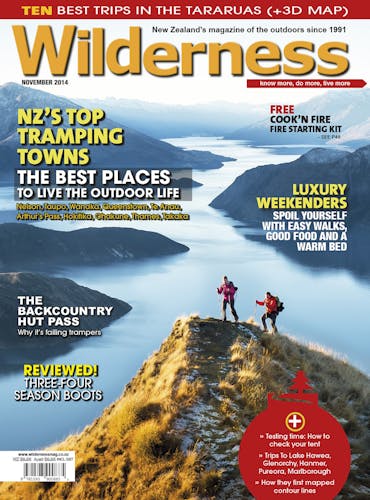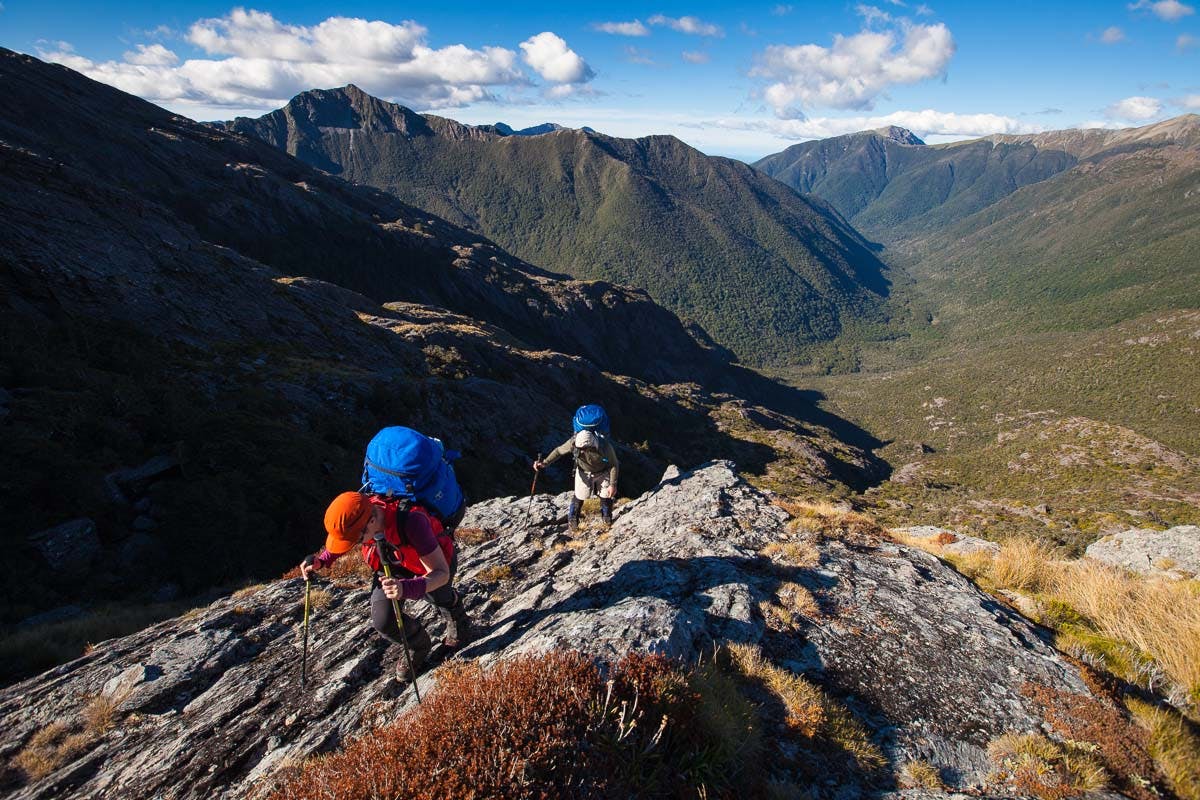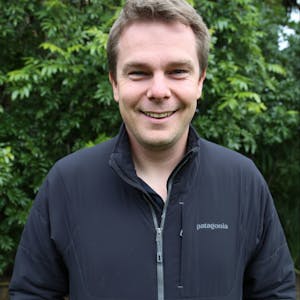A blend of alpine tramping, golden beaches, cafes and… low wages. Matthew Pike asks if the reality lives up to the hype
Picture a giant, three-sided rugby stadium. At the near touchline is the Richmond Ranges Stand – a great place to sit if you want to be close to the action. You can almost reach out and touch the players.
At the southern end, behind the goal, is the Nelson Lakes Stand. This is set further back than the Richmond Ranges Stand but is better maintained and offers stunning elevated views.
Kahurangi Stand, at the far touch-line, is vast and often looks empty, certainly in comparison to the small family stand overlooking the far try-line – Abel Tasman Stand. This is extremely popular, particularly with away fans, and its facilities are top notch.
All these beautiful structures overlook a pitch of vineyards, orchards, forest, cattle farms and small towns.
Nelson, at the corner flag, is the biggest of these towns. The glorious lifestyle of sun, beaches, rivers and mountains is no secret. And for that reason it’s the second fastest growing place in the country behind Auckland.
But it’s still by no means big and the climate is one that seems to inspire its residents to get outdoors and fit. This was brought home to me by the number of joggers who passed me as, in contrast, I sat on a bench munching a packet of Cheezels.
One older woman, as if knowing I was in the city to write this feature, stopped as she passed me and said: “Lovely morning again. I love living in Nelson.” She’s not alone.
At first glance, Nelson seems like the ideal tramping town. It has an immense variety of short walks, day walks and multi-day tramps. There are two Great Walks in the region (Abel Tasman Coast Track and the Heaphy), and classic tramps, such as the Wangapeka Track, Dragons Teeth, Travers Sabine and Lake Angelus.
There are terrific mountains such as Mt Arthur, Mt Owen and Mt Franklin. The region’s inundated with forest walks, above the tree-line tramps, canyons, golden beaches only reachable by foot or boat, and some pretty serious winter mountaineering.
There are umpteen options for kayakers, mountain bikers (active clubs are building new tracks all the time), fishermen and climbers.
But is the reality of moving to the region as terrific as it sounds? Keen tramper and hut bagger Ian Morris moved to Nelson from Auckland’s North Shore at the end of 2012. His decision was as much to do with lifestyle as freeing capital from his Auckland property.
So how does life compare to the Big Smoke?
“I think my lifestyle’s improved,” says Morris. “A big difference is that tramping clubs in Auckland have buses to get typically to Tongariro National Park. It takes 4-5hr to get there, so you’ll leave on a Friday evening, sleep on the bus and arrive at midnight.
“In Nelson you don’t need the buses, you’re there within an hour. You can just jump into the car and get to places quickly.”
Prior to moving to the region, Morris had done some big multi-day trips in Kahurangi and Nelson Lakes. “When you live elsewhere, you don’t tend to do the smaller trips, so it’s nice to be able to explore all these little ones now,” he says.
So is there anything to miss about the big city? “I don’t really miss Auckland,” says Morris. “I certainly don’t miss the traffic! And I feel I’m going to more things in the city centre because it’s so much easier to get to.
“But it takes some effort to develop new friendships down here. It’s not necessarily easy to integrate. Other new arrivals here are probably more open to us than long-time Nelson people. But joining groups, such as Forest & Bird and local tramping clubs, does help develop friendships.”
A perk for anyone living in Nelson over the next few years will be the development of The Brook Waimarama Sanctuary, where the largest predator proof fence on the South Island will be built in forest at the very edge of town. Once the fence is up, rare species will be reintroduced one by one, the overspill of which will benefit residents nearby.
General manager for the project, Hudson Dodd, is himself an import. He and his wife arrived in New Zealand from the US looking for a lifestyle change. After four months of checking the major population centres Nelson won hands down.
“The tramping opportunities within a relatively short drive are mind boggling,” he says. “There’s also great swimming, kayaking, snorkelling and fishing – there are heaps of alpine lakes, streams and rivers full of trout.
“Anyone moving here from a place like Wellington or Auckland must remember it’s a small community and is isolated. But I would recommend it unequivocally – it has a reputation for being an outdoor capital for good reason with all the national parks. And don’t forget Richmond Forest Park – it’s an unsung gem.”
It was this park I decided to spend a day exploring. From the city centre, it was just 20 minutes’ drive up the narrow, wiggly Maitai River to the start of a trail up to Dun Mountain. This summit can also be reached from the Brook Valley – at the edge of town – but along an old railway line perhaps more suited to bikers than trampers.
The route I took is more direct and, within three hours, I was standing on a rocky saddle with the whole Richmond Range mapped out in front of me. To the west, the summits of Mt Arthur and co were faded under a veil of cloud and, to the north of these mountains, the hills gradually descended to the coastline of Abel Tasman.
It was a glorious trip. But one that, for every person I told, they suggested a better one. Everyone knew a more rewarding climb, better view, more exciting ascent – and that was just in the Richmond Ranges. Don’t get them started on the rest!
One of the reasons Nelson did so well in our poll would be that, as well as the climate and hills, the town’s big enough for a healthy cafe culture, boutique shops, concerts and fine dining, as well as the likes of a Pak’nSave and KMart.
The city does have a reputation for being pricey. But Jeremy Matthews, from Bayleys Real Estate in Nelson, says there are still bargains available if you know where to look for them.
“The $250,000-$375,000 price band is the busiest,” he explains, adding that the proposed Southern Link could make areas such as Tahunanui more desirable, as it would take traffic to the other side of town.
“At the moment Tahunanui’s held under the heel of SH6. This is a lid on what will become one of the sweetest pieces of seaside real estate in New Zealand.
“I can’t think of anywhere else in the country where you have a beautiful beach surrounded by beat up old units. It’s shabby, but get ready – it’s Cinderella in rags. If I was buying in Nelson I’d be looking around there.”
But any move to Nelson from one of the big centres comes with a warning for those still working. Jobs are far harder to come by, wages are lower and, as Matthews points out, it’s hard to run a business: “Everything’s expensive to get here so wages are low and there’s real pressure to drop fees. If you’re bringing your own business, you need to work out where your income will come from, make sure it’s locked down tight and the prognosis is robust.”
Get the finances sorted, says Matthews, and there’s not much to worry about: “If you can’t have a good life in a place as benign as Nelson you’re a sick puppy. The only thing wrong with Nelson is everywhere else you go is ‘yeah, great… but not as good as Nelson’.” Matthews leans back and grins: “It’s a pain in the arse.”








